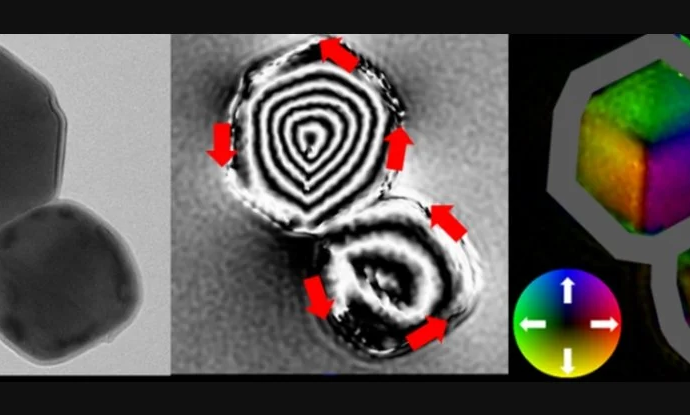The Solar System is positively lousy with magnetic fields. They drape around (most of) the planets and their moons, which interact with the system-wide magnetic field swirling out from the Sun.
Source: Science Alert
Although invisible to the naked eye, these magnetic fields leave their marks behind. Earth’s crust is riddled with magnetic materials, for example, that retain a paleomagnetic record of the planet’s changing magnetic field. And meteorites, when we are lucky enough to find them, can tell us about the magnetic field in the environment they formed in, billions of years ago.
Most of the meteorites we study in this manner are from the asteroid belt, which sits between Mars and Jupiter. But astronomers from Japan have just developed a new means of probing the magnetic materials within meteorites from much, much farther away – and thus provided a new tool for understanding the outer reaches of the early Solar System.
“Primitive meteorites are time capsules of primordial materials formed at the beginning of our Solar System,” said astronomer Yuki Kimura of the Institute of Low Temperature Science at Hokkaido University in Japan.
“To understand the physical and chemical history of the Solar System, it is crucial to analyze various types of meteorites with different origins.”
The technique is called nanometer-scale paleomagnetic electron holography. It utilizes the powerful technique of electron holography, which involves studying the interference patterns produced by electron waves in a material to understand the structure of that material. On the nanoscale, this produces very high resolution data.
They then applied this technique to a very special meteorite called the Tagish Lake meteorite. This meteorite fell to Earth in 2000, and was retrieved very quickly afterwards, which means it was unlikely to be significantly altered by the environment in which it fell.
Previous analyses suggested that the meteorite was unusually pristine, forming around 4.5 billion years ago – just a few million years after the formation of the Sun. Its trajectory suggests that it traveled to Earth from the region of the asteroid belt, and reconstruction suggests that it was about 4 meters (13 feet) across before atmospheric entry.
It also contains magnetite. When this meteorite was hot and molten, any external magnetic fields would have altered and aligned the magnetite along its field lines. As the rock cooled and hardened, these alignments would have set, leaving a fossil record of that magnetic field.
Based on their electron holographic imaging, and numerical simulations, Kimura’s team was able to infer the history of the Tagish Lake meteorite.
They found that the parent body of the meteorite formed in the Kuiper Belt, the icy region out past Neptune, about 3 million years after the formation of minerals in the Solar System. There, it grew to a size of about 160 kilometers (100 miles) across.
From this point, it migrated inwards towards the asteroid belt, possibly due to perturbation from the migration of Jupiter, a process that wreaked quite some gravitational havoc on the Solar System.
During this process – about 4-5 million years after the formation of minerals – the Tagish meteorite was impacted by a body about 10 kilometers across, traveling at a velocity of about 5 kilometers per second.
The magnetite inside the meteorite, the team concluded, would have formed as the parent body heated up to around 250 degrees Celsius due to radiogenic internal heating, combined with heat from the impact. Then it just hung out, being its pristine self, until it wound up smashing into Earth.
This yields new clues as to how the Solar System came to be the way it is today – a process that is largely shrouded in mystery. The team is now applying their technique to samples of the asteroid Ryugu, retrieved by the Hayabusa2 probe, in the hope of revealing more.
“Our results help us infer the early dynamics of Solar System bodies that occurred several million years after the formation of the Solar System, and imply a highly efficient formation of the outer bodies of the Solar System, including Jupiter,” Kimura said.
“Our nanometer-scale paleomagnetic method will unveil a detailed history of the early Solar System.”
The research has been published in The Astrophysical Journal.
Source: Science Alert

































Leave a Comment
You must be logged in to post a comment.